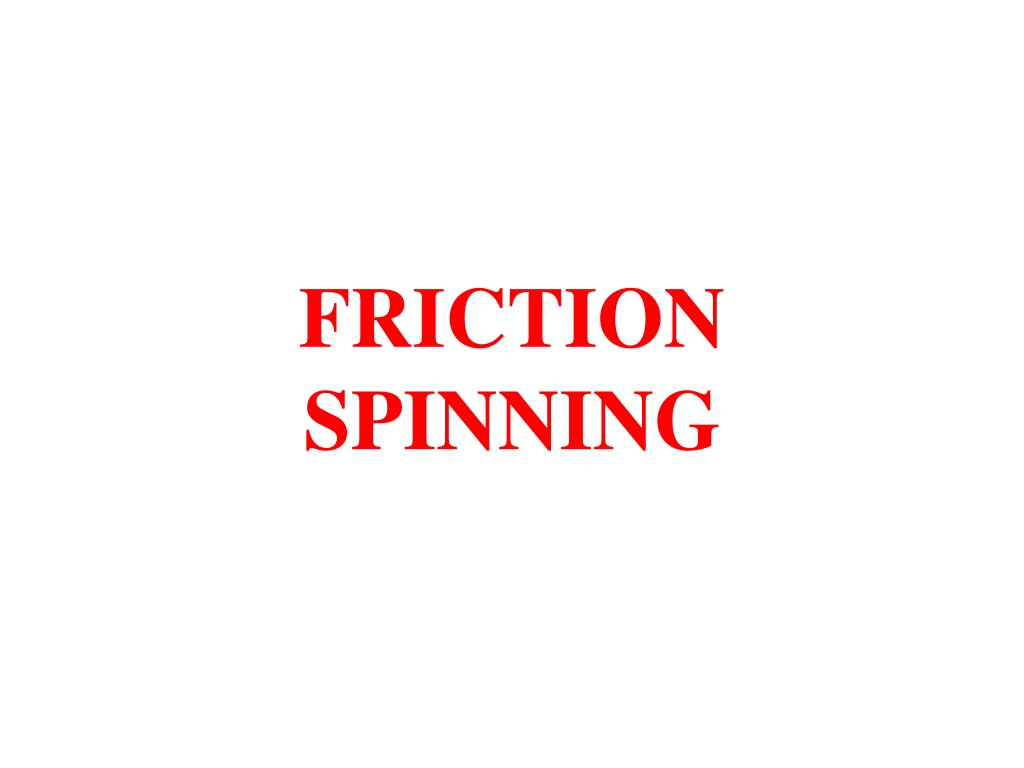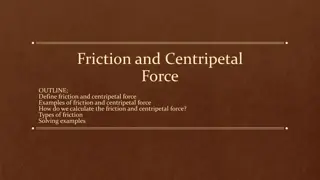Understanding Friction Spinning Process and Technologies
Friction spinning is a textile manufacturing process that involves opening, accelerating, collecting, twisting, and winding fibers to create yarn. This process includes operations like fiber strand opening, acceleration, and collecting into a new strand, followed by imparting strength through twisting and yarn withdrawal. Various classifications of friction spinning methods, such as single-sliver feed and multiple-sliver feed, are detailed along with the types of friction assemblies used. The most widely used friction spinning types are highlighted in terms of their key characteristics. Technological relationships involved in the process, such as feed, opening, fiber transport, collection, twist imparting, and withdrawal/winding up, are also explained. Specific details of the DREF-2 spinning technology, its spinning positions, delivery speed, raw material compatibility, and yarn characteristics, are provided.
- Friction spinning
- Textile manufacturing process
- Yarn production
- Fiber technology
- Spinning technologies
Download Presentation

Please find below an Image/Link to download the presentation.
The content on the website is provided AS IS for your information and personal use only. It may not be sold, licensed, or shared on other websites without obtaining consent from the author. Download presentation by click this link. If you encounter any issues during the download, it is possible that the publisher has removed the file from their server.
E N D
Presentation Transcript
FRICTION SPINNING
The operations to be carried out in this spinning process Opening of the fiber strand; Acceleration of the fibers; Collecting the fibers into a new strand; Imparting strength by twisting; Withdrawal of the resulting yarn; Winding onto a cross-wound package.
Classification Feed : a) Single-sliver feed; b) Multiple-sliver feed (Dref-2000 and Dref- 3000); Opening assembly : a) One opening assembly; b) Two opening assemblies or drafting devices (Dref-3000); Separation of collecting and twisting functions : a) collection and friction assemblies separated; b) friction assembly also serves as collecting device; Contd
Classification Number of friction surfaces : a) One friction surface (Dref-1); b) Two friction surfaces; Type of friction assembly : a) Perforated drums; b) One perforated drum with one smooth drum (blind drum); c) Two discs; d) Disc and roller in combination; e) Two crossed belts.
The most widely used types are those with the following characteristics: Single-sliver feed; One opening roller; Friction assembly also acting as collection device; Two friction surfaces; Two perforated drums or one perforated drum and one blind drum in combination.
Technological Relationships 1. Feed 2. Opening 3. Fibre transport 4. Fibre collection 5. Imparting twist 6. Withdrawal and winding up
DREF - 2 1. Feeding Zone 2. Opening Roller 3. Blower 4. Perforated Drum 5. Suction Stream 6. Friction Yarn 7. Open Fibres
Specification of Dref-2 Spinning positions per machine 6 - 64 Delivery speed 250 m/min wool, bast fibers, synthetic fibers, secondary fibers Raw material Count range Ne 0.3 - 14.5; 2 000 - 40 tex Feedstock card sliver Yarn packages up to 8 kg Yarn type normal OE yarn Yarn characteristics woolen-spun character, round, even
DREF 3 1. Draw frame Sliver 2. Drafting arrangement 3. Fibre Strand 4. Spinning Drums 5. Open Fibres 6. DREF 3 Yarn 7. Take off Rollers
Specification of Dref-3 Spinning positions per machine 3 - 24 Delivery speed 250 m/min Raw material cotton/synthetic fibers Count range Ne 0.3 - 14.5; 2 000 40 to 700 tex Feed stock draw frame sliver Type of Yarn bundled yarn few envelope fibers = ring-spun yarn character; many envelope fibers = rotor-spun yarn character Yarn characteristics
Advantages of DREF 3 Yarns Dref-3 is a typical process for the production of yarn specialties: Yarns made from unusual fibers; Composite yarns core/sheath structure; Yarns with special properties (protective textiles). Suitable for producing special tailor made yarns. with a special
Fine and coarse yarns in the convergent region of friction-spinning drums
Advantages of Friction Yarns Advantages are as follows : High delivery speeds; Low yarn production costs (lower than those of ring spinning); Elimination of rewinding; Low end breakage rates; Yarn character similar to that of ring-spun yarn; No wrapping fibers; Optically good mass evenness (well suited to knitted goods); Better and softer handle than that of rotor-spun yarn; Smooth yarn appearance.
Disadvantages of Friction Yarns Disadvantages are as follows : Low yarn strength; High tendency to snarl; Higher number of fibers needed in yarn cross- section; Difficulty of keeping spinning conditions constant; High air consumption; Increasing unevenness and imperfections with increasing spinning speed, and further reduction in yarn strength.
Limitations of Friction Spun Yarns Low yarn strength. The extremely poor fibre orientation renders the friction spun yarn very weak. Twist variation from surface to core is quite high. (another reason for poor strength) Requirement of higher no. of fibres (100-150) in yarn x-see, limit the fineness of yarns. Yarns have higher snarling tendency. Increase of yarn unevenness & imperfection as production speed increases. High consumption of air.
Fibre specifications for optimum results in Friction Spinning The fibre specifications, for optimum results in order of preference are : i. Fibre to fibre & fibre to metal friction ii. Fibre tenacity iii. Fineness iv. Length v. Cleanliness. Contd
Fibre specifications for optimum results in Friction Spinning i. Fibre to fibre & fibre to metal friction - The twisting rate in friction spinning is largely dependent on friction between fibres & drum surface. Therefore, a higher coefficient of friction between fibre and metal is desirable. A higher inter-fibre friction is also desirable for proper binding of fibres in core as well as the sheeth. Contd
--- Fibre specifications for optimum results in Friction Spinning ii. Fibre Tenacity - The inherent low strength of friction yarn can be partly overcome through use of high tenacity fibres. So high tenacity fibres are recommended for friction spinning. Contd
--- Fibre specifications for optimum results in Friction Spinning iii.Fineness - Finer fibres help in increasing friction surface & meeting the requirement of greater no. of fibres in yarn cross section. (100-150) fibres Contd
--- Fibre specifications for optimum results in Friction Spinning iv.Fibre Length - The fibre length requirement in friction spinning is similar to that in rotor spinning with optimum lying between 32-38 mm. Longer fibres are more susceptible to damage & lapping around the opening roller and acquire more disorientation while landing on the spinning down causing loss in strength. Contd
--- Fibre specifications for optimum results in Friction Spinning v.Cleanliness A cleaner feed would help in preventing frequent clogging of perforations in the spinning drums. Contd
End Uses : Friction Spinning Weft & pile yarns Velvets Blankets Terry towels Knit-goods Furnishings Filters Technical fabrics Secondary carpet Backings of polypropylene Low cost interlinings Spun yarns for industrial textiles Conveyer belts Tarpaulins roof coverings
Yarn Quality of Friction Yarn In general the friction yarn is 30-40% weaker than ring yarn due to poor fibre orientation, twist differences from out side to inside and unidirectional migration (out side to inside). The strength deficit increases as one moves to longer fibres as they suffer greater damage during opening and acquire more disorientation while landing on the spinning drum. The optimum fibre length for DREF 2 and sheeth of DREF 3 is 32-38 m. Mass irregularity & imperfections in friction yarn are higher than ring yarns in 65/35 PC blend. But 100% cotton yarns are more regular than corresponding ring yarns but less regular than rotor yarn. Contd
--- Yarn Quality of Friction Yarn These yarns have better appearance than ring & rotor yarns. However, the friction yarns are more hairy. These yarns show a lower abrasion resistance for cotton & blend yarns. These yarns are bulkier than ring yarns as it is spun at very low tension, 20% of that in ring spinning. Spinning performance of 100% cotton yarn is better with 70% core & 30% sheeth than 50% core & 50% sheeth in DREF 3 but the yarn strength is better with the latter proportion. There is significant mass variation due to periodic air stream caused by spiral clothing of Contd
--- Yarn Quality of Friction Yarn Opening roller. This results in periodic strength variation. Also, due to poor control on twist insertion rate there is variation from one spinning position to the other. Friction yarn has a soft hand. The yarn spinning process does not encounter many breaks due to very low spinning tension. Most of the weak places are passed on to winding. The yarn quality deteriorates and end breaks go up as one tries to spin finer counts as the sleave suffers from discontinuities or holes having very few fibres. Contd
--- Yarn Quality of Friction Yarn This result is increased chances of a break in contact the yarn tail & the sleave the minimum no. of fibres required in the cross-section to form yarn is of a higher order in friction spinning than even in rotor spinning.
Friction Yarn Quality Comparison with Ring Yarn Sl. No. Property Comparison with Ring Yarn 30-40% weaker (Poor orientation twist difference. 1. Strength Mass irregularity & imperfections 2. Higher for 65/35 Pc blend. 3. Appearance Better 4. Hairiness More 5. Abrasion resistance Lower 6. Bulkiness More (low tension in spinning zone) Contd
Friction Yarn Quality Comparison with Ring Yarn Sl. No. Property Comparison with Ring Yarn More (periodic air stream by spiral clothing opening roller) More (periodic air stream by spiral clothing opening roller) (poor control on twist insertion) 7. Mass variation 8. Strength variation 9. Hand Softer Lower (low tension) 20% less than Ring Spinning 10. Spinning breaks No. of fibres in yarn x-section 11. Higher than rotor yarn























